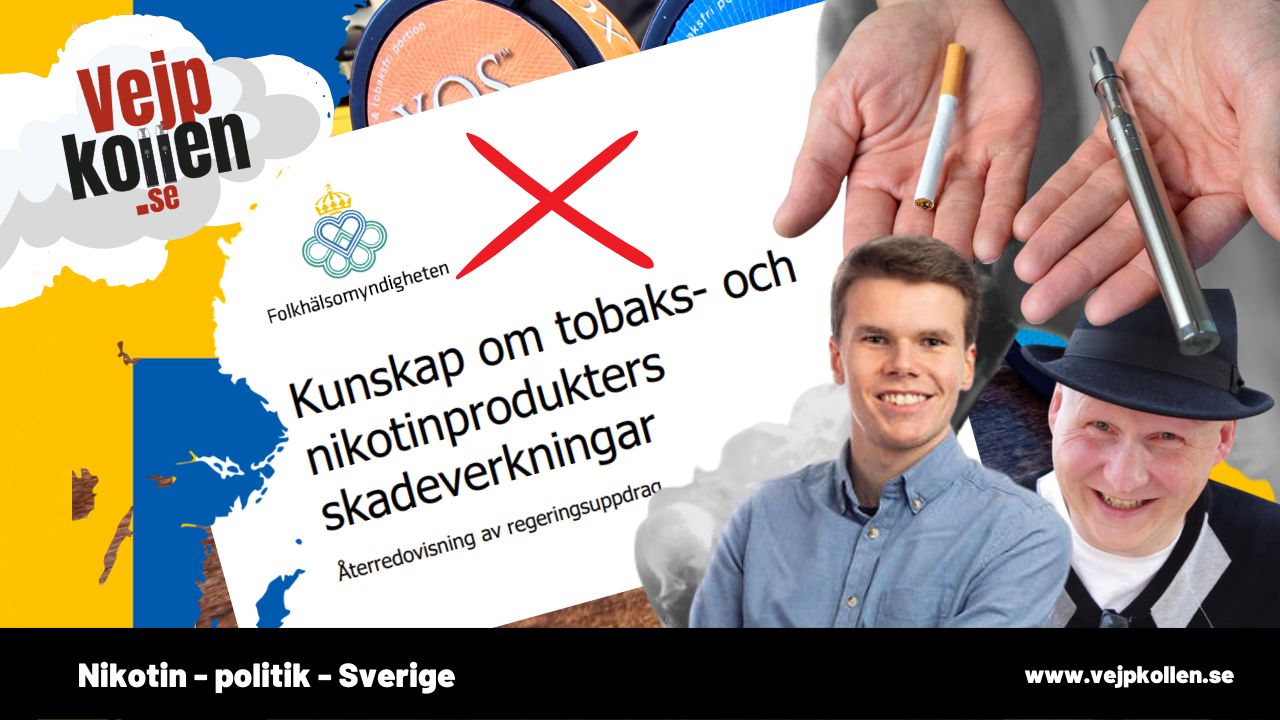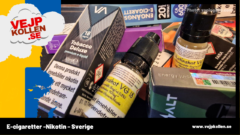"The report does not provide users with clear information on relative risks. We only get assumptions and opinions that are not scientifically based. That's a thumbs down."
So say Karl-Åke Johansson and Samuel Lundell, active in the consumer-driven NNA Sweden and the Swedish Snus Association, in a comment on the Public Health Agency of Sweden's report "Knowledge of the harmful effects of tobacco and nicotine products".
On 30 June, the report on the harmful effects of various nicotine products was published by the European Commission. The Social Affairs Committee requested in 2022. The task was to report on the risk of injury from different products and then compare the risks. But when the Public Health Agency of Sweden, together with SBU and the National Board of Health and Welfare. presented its studyInstead, it was ignorance and a clear political message that shone through. At least according to Samuel Lundell and Karl-Åke Johansson, active in two of Sweden's largest user organisations for nicotine users.
"It is a sweeping statement to say that nicotine use is dangerous, and that legislation should be tightened overall. But they also say that they don't know enough to draw any conclusions about the relative risks between snusing, smoking, or vaping. It is a study full of contradictions." says Samuel Lundell, Chairman of the National Snus Association to Vejpkollen.
Risk differences - despite lack of knowledge
According to the Swedish Public Health Agency, the state of knowledge about the risks of both snus (mainly nicotine pouches) and e-cigarettes is unclear. However, the risks of cigarette smoking are well documented, the report states.
Smoking increases the risk of most cardiovascular diseases, several cancers, type 2 diabetes, lung diseases, premature death, and in pregnancy: miscarriage, stillbirth, low birth weight, sudden infant death syndrome, according to the Swedish Public Health Agency.
Fewer risks with snus
Corresponding risks for snus are less known and are based only on Swedish studies, according to the investigators. However, the risks appear to be much lower: increased risk of high blood pressure (as for all forms of nicotine use), some cancers (although there are no documented links), increased risk of type 2 diabetes (as for smokers), increased risk of death after a stroke (as for smokers). In pregnancy: increased risk of premature birth and disruption of the baby's respiratory regulation (overall fewer risks than with smoking).
Unclear with road opening
Regarding the use of e-cigarettes, the FHM leaves many gaps in the tables. The risks it claims to know about are: impact on heart rhythm, blood vessels and blood pressure, and exacerbation of asthma (according to small studies of symptoms experienced by smokers). According to the agency, there is a lack of knowledge about the risk of cancer, type 2 diabetes, pregnancy and premature death.
"Excludes 99 per cent of research"
The public health authority's own description of the source material shows that the investigators excluded many studies related to the risks of different nicotine uses. Out of almost 6,000 articles in the databases, only 18 remained after the screening, the majority of which are summaries. The Public Health Agency of Sweden cites the risk of bias and research with underlying industrial interests as reasons for the lack of evidence.
"Instead of thoroughly reporting the available research, they have excluded 99.7 per cent of all the research that actually exists on snus and e-cigarettes. This of course does not hold up. If other investigations from the UK and New Zealand can handle the material, our Swedish investigators should be able to do so as well" says Karl Åke Johansson, spokesperson of the New Nicotine Alliance Sweden.
Difference with similar reporters
According to similar reports from, for example UK Public Health Agency contrary to what the Public Health Agency of Sweden claims, it is possible to scientifically establish clear differences in risk between different nicotine products. Since 2015, British authorities have been compiling summaries of relative health risks between smoking and vaping and refers, among other things, to biomarker studies (substances in the body that increase the risk of disease) and several randomised control trials where smokers and road users have participated in clinical settings.
"Vaping exposes the body to far fewer harmful substances than smoking. Whilst not completely harmless, vaping is a much safer way to use nicotine than smoking cigarettes," the UK Public Health Agency writes in its last updated report (2022)
However, the use of snus and nicotine pouches is not currently included in the UK survey.
"The WHO stands in the way"
Karl-Åke Johansson and Samuel Lundell argue that the Public Health Agency has deliberately tried to avoid studies that would in any way show the relative risks of e-cigarettes and snus compared to smoking.
"The Swedish Public Health Agency refers to the WHO Tobacco Convention. The WHO is clear that harm minimisation, which is based on relative risks between different nicotine products, is not desirable. They say that the countries that have signed the Convention should fall in line. It does not matter if major institutions such as the British Medical Association and the Chochrane reviews come to a different conclusion. Asking the Public Health Agency of Sweden to investigate the relative risks of nicotine use is like asking for a review of heaven," says Karl-Åke Johansson.
"Should complain about the report"
At the same time, Mr Johansson says that the mission was, after all, very clear and that the agency has simply failed to fulfil it, for whatever reason.
"It should be a useful basis for making decisions. This is mostly speculation based on very weak foundations and surrounded by the agency's negative view of nicotine use. They say that e-cigarettes CAN be dangerous in the long term, but only because there are no studies on long-term effects. It claims that vaping and snuffing CAN lead to smoking, although it clearly states that it cannot establish a causal link. But since nicotine CAN be dangerous, they choose to emphasise the risks, without discussing the differences between, for example, snuffing and smoking. This is not what the Parliament asked for. If I were on the Social Affairs Committee, I would complain about the investigation and demand a new, functioning product." Says Karl-Åke Johansson.
Authority calls for more bans
In connection with the publication of the report, the Public Health Agency of Sweden also published a press release highlighting the risks of nicotine use and calling for stricter legislation.
"All tobacco and nicotine products contain nicotine, which is toxic, highly addictive and can pose health risks. The Swedish Public Health Agency considers that the availability and demand for tobacco and nicotine products needs to be reduced, especially to protect children and young people. "There is a need for regulation of these products that is more similar to the protective legislation that exists for tobacco smoking, including a ban on flavourings, regulation of nicotine content and a marketing ban," says Director General Karin Tegmark Wisell in a statement. FHM press release.
"Similar to government activism"
Karl-Åke Johanson and Samuel Lundell believe that the agency's statement is at odds with the current government's ambition to introduce a harm minimisation perspective in nicotine policy, an ambition that a majority of the parliament also supports. This was also the background to the investigation, they say.
"This looks more like government activism than anything else, unfortunately. I hope that wise politicians put their foot down and demand a more ambitious review of the relative risks. It is obvious that the authority has its own agenda here and that it has coloured the work. This investigation should therefore be consigned to the wastepaper basket." says Samuel Lundell, Snusarnas Riksförbund.




